It’s not easy to retool a beloved franchise, or to breath fresh life into a game that’s already gone through three previous editions (and a few other system ports), but the team at FASA Games is doing just that with their Earthdawn 4th Edition Kickstarter. The project is doing wonderfully, with fans new and old chipping in to see a revitalized version of this classic game. I spoke with Josh Harrison, one of the developers of the Earthdawn 4e project, about the game and its creator’s ambitions.
A New Age
Cardboard Republic: You’re currently Kickstarting the 4th Edition of Earthdawn. For those of us unfamiliar with the first three editions, can you tell us a bit about the game in a broad sense? What’s the world like?
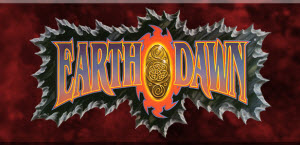 Earthdawn is set in a post-apocalyptic fantasy world, but one that has had some time to rebuild. For about four hundred years, creatures from the depths of astral space called the Horrors ravaged the world. This period of time is most commonly called the Scourge.
Earthdawn is set in a post-apocalyptic fantasy world, but one that has had some time to rebuild. For about four hundred years, creatures from the depths of astral space called the Horrors ravaged the world. This period of time is most commonly called the Scourge.
Fortunately, there was warning that the Scourge was coming, and the people of the world built underground shelters to hide from the Horrors, a kind of magical bomb shelter called a ‘kaer’. The Scourge ended about a hundred years ago, and people have started reclaiming the surface.
There is still danger in the world. Many ‘kaers’ didn’t survive the Scourge for one reason or another, there is much that’s changed in the world, and there are those who seek their own personal power over the good of others. The players take on the role of heroes in this land, helping to rebuild, fight off the influence of the Horrors that remain, and uncover the secrets lost to time.
CR: And how has 4th Edition changed from previous editions?
The biggest difference is probably in the setting. For many years now the land of Barsaive has been teetering on the edge of a war between the Kingdom of Throal – the largest political power in the province—and the Theran Empire, who once ruled Barsaive and want to bring it back under their heel.
Fourth Edition is going to be set in the aftermath of that war. This advancement of the setting’s timeline will allow us to introduce some changes, and establish a new status quo that will make the setting friendlier to new players.
There are going to be some rules changes and updates as well, but the core mechanic of the game, the Step System, will remain largely unchanged.
CR: Longtime Earthdawn players must all have opinions about what they’d like to see in the latest edition. Is it difficult to create content for such an established world? How do you balance the expectations of longtime fans with your own design goals?
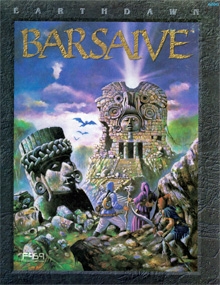
A 1st Edition campaign to explore Barsaive.
It is probably one of the biggest challenges I’ve faced in my life, and kind of scary if I think about it for more than a moment!
The existing fanbase for the game is a passionate lot, and everybody has their own ideas on how the game is best improved. Some of the changes we have previewed over at www.fasagames.com have been controversial, but for the most part the response and feedback have been positive, and we have been engaging the fans and taking their feedback into account. We obviously can’t satisfy everyone, but we want to make sure that we’re open to good ideas, and appreciate the passion and assistance we’ve been getting.
Rolling New Adventures
CR: You describe your dice system as “open-ended.” What do you mean by that?
When you’re trying to accomplish a task in Earthdawn, you roll a set of dice based on your level of ability at the given task, trying to equal or beat a target number. For example, when trying to hit a bandit with a sword you might roll a d10 + d8, trying to equal or beat a 9. The dice are added together to determine the final result, and if you roll the maximum value on a given die, you reroll and add it to the total.
So, in the previous example, you roll a 7 on the d10 and an 8 on the d8, you get to roll another d8 (called a bonus die) and add it in. Roll a 5 on that bonus die, and your total is 20 – more than enough to hit the bandit. You continue rolling the die as long as you get the maximum value, so in theory there is no upper limit to the final result of your roll.
This can result in some truly epic results, and there is a bit of a thrill when your dice keep “exploding” like that.
CR: The game’s setting – the world, types of characters, etc. – are definitely expansive. Can be intimidating for new players and people unfamiliar with Earthdawn? How do you try to mitigate that in the new edition?
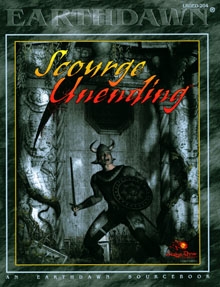
A 2nd Edition book expanding on all the Horrors still lurking.
One of the advantages is that while there are a lot of options, both from a system and setting standpoint, the game plays on a lot of the tropes of classic D&D style fantasy gaming. There are fifteen Disciplines (the Earthdawn equivalent of classes), but they are somewhat iconic, and it usually isn’t that difficult for somebody to find something that captures their attention.
On top of that, you aren’t typically going to be overwhelmed with a too many choices; each of the Disciplines has a selection of abilities they can use, and these expand and get added onto as the characters (and their players) gain experience with the system.
CR: Continuing with that thought, then, how do the magic and combat systems work?
All characters have three defense ratings: Physical, Mystic, and Social. These set the target numbers for attempts to affect the character in certain ways. For example, Physical Defense sets the difficulty to hit the character with a sword, axe, or arrow while Mystic Defense sets the difficulty to affect the target with magical attacks.
The characters have your standard suite of attributes (Dexterity, Strength, etc), which combine with your skills to determine the dice you roll (as explained above). Your standard attack with a sword, for example, is Dexterity + Melee Weapons. If you hit your target, you do damage based on your weapon (Strength + Weapon Damage), with the result reduced by the target’s armor.
Spellcasters, unlike many other games, don’t have a spell point or spell slot system. They can, in theory, cast any spell they know as many times as they want. However, due to the lingering influence of the Horrors and the damage they caused to astral space, it isn’t really safe to do so. Using “raw magic” as it is called can cause the caster damage, as well as attract the attention of nearby Horrors. To protect themselves, casters have a magical construct called a spell matrix that filters astral energy, making it safe to use.
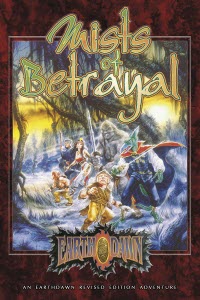
A 3.5 Edition campaign over a magic talisman.
This means that a caster will have a number of “safe” spells that they can cast – and these safe spells can be swapped around more or less at will. Casters can be very versatile when not under any kind of time pressure, since they can safely ready and cast any spell they know. In combat, when things get a little bit more hectic, their options tend to be more limited.
The last thing . . . and probably one of the more iconic aspects of the Earthdawn magic system, is the way that magic items work. Rather than just finding a magic sword that grants you bonuses as soon as you pick it up, magic items require you to learn about their history. Once you have this knowledge, you magically bond the item, unlocking its power.
The more you learn, the more powerful the bond can become, and the more powerful the item as a result. This can make magic items the focus of entire story arcs in an Earthdawn campaign, as the characters track down knowledge lost to time in distant ruins and forgotten kaers.
To the Badlands
CR: You have one companion book stretch goal already unlocked. Tell us about Travar: City of Merchants.
Travar is a city in south-central Barsaive, and it is a hub of trade outside the direct influence of the Kingdom of Throal. The sourcebook will examine and explore the merchant city, describing the people that inhabit it, and providing information that can be used for individual adventures or as a base of operations in a campaign. There will also be information on the Badlands—an area that was once rich farmland, now badly damaged by the Horrors during the Scourge.
CR: Thank you so much for answering these questions. But before we go: what are the details for the release of Earthdawn? When do you expect to have it out and where will fans be able to pick it up?
You’re welcome; I must admit I love talking about the game.
We expect the core books (Player’s Guide and Game Master’s Guide) to be released in PDF format in July [2014], with the print versions out in August. There’s a GM screen that will be available at the same time, or very soon after that. The Travar book is slated for release in October or November, with the PDF version again coming out before the print version.
All the products will be available through our online store, with PDF versions also being available at DriveThruRPG, and print product should be available through traditional retail through Studio 2.
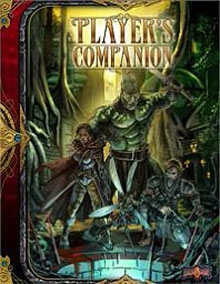
Do you seek to bring this Player’s Companion into the 4th age?
The conflicts of Barsaive have been rekindled once more. There are plenty of new problems to await players, as well as many of the classic foes returning players will expect. Whether you’re learning about the game for the first time (like us), or you’re a veteran enough citizen of the realm to remember when Horrors still ruled the land, the FASA folks hope that they have something in this latest edition to pique your interest. Do they? You’ll have to check out their Kickstarter and find out!
Photo Credits: All artwork by FASA Games.
